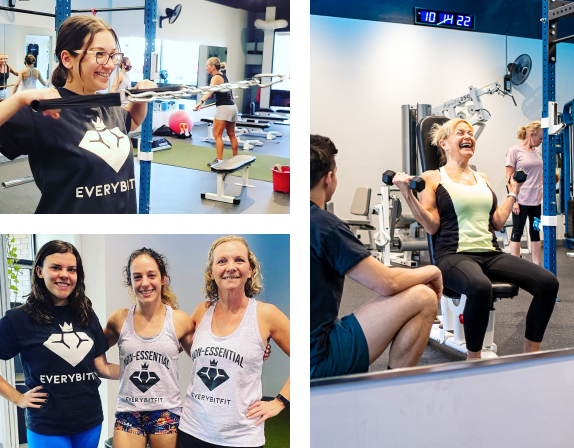When it comes to strength training, there are two main approaches – functional vs traditional strength training. While both aim to build strength and improve overall fitness, they have distinct differences in terms of their focus and benefits. A local personal trainer, like Zach O’Kane at Every Bit Fit in Scottsdale, can help make this decision clear and aligned with your goals, but let’s describe them in more detail.
What is Traditional Strength Training?
Traditional strength training, as the name suggests, is the more conventional approach to building strength. It typically involves exercises that target specific muscle groups and are often performed using weight machines, free weights, or resistance bands. The main objective of traditional strength training is to increase muscle strength and size.
What are Traditional Strength Training Benefits
Traditional strength training offers a range of benefits. Firstly, it helps to promote muscle growth and development. By consistently challenging your muscles with heavy weights, you can stimulate muscle fibers to grow larger and stronger over time. This can lead to increased muscle mass and improved overall physical performance.
In addition, traditional strength training can also improve bone density. The stress placed on the bones during weight-bearing exercises helps to strengthen them and reduce the risk of osteoporosis. It can also enhance joint stability, which is particularly important for individuals with conditions such as arthritis.
Furthermore, traditional strength training can improve overall body composition by reducing body fat and increasing lean muscle mass. This can contribute to a more aesthetically pleasing physique and boost self-confidence.

No Risk, All gain
Free Consultation & 30-Day Money Back Guarantee
What is Functional Strength Training
On the other hand, functional strength training focuses on movements that mimic everyday activities and improve overall functional fitness. It involves exercises that engage multiple muscle groups and challenge the body to move in a more dynamic and functional way.
Functional strength training emphasizes movements such as pushing, pulling, squatting, lunging, and rotating. These movements are often performed using bodyweight or functional equipment such as medicine balls, resistance bands, or stability balls. The goal is to develop strength, stability, coordination, and mobility that can be directly applied to real-life situations.
What are the Benefits Of Functional Strength Training
Functional strength training offers several benefits that can enhance both physical performance and everyday tasks. Firstly, it helps to improve overall functional fitness, allowing you to perform activities of daily living with greater ease and efficiency. By training movements that are used in daily life, you can enhance your ability to perform tasks such as lifting heavy objects, carrying groceries, or climbing stairs.
Furthermore, functional strength training can help to prevent injuries. By improving balance, stability, and joint mobility, you can reduce the risk of falls and other accidents. It also promotes proper movement patterns, which can alleviate muscular imbalances and reduce the likelihood of overuse injuries.
In addition, functional strength training can enhance sports performance. The movements and exercises involved in functional training are often specific to certain sports or activities, making it a valuable tool for athletes looking to improve their performance in a particular sport or recreational activity.
How Do Functional vs Traditional Strength Training Differ?
The main difference between functional vs traditional strength training lies in their approach and focus. Traditional strength training primarily targets individual muscle groups and aims to increase muscle strength and size. On the other hand, functional strength training emphasizes movements that are applicable to daily activities, improving overall functional fitness and performance.
How Can You Tell If A Workout is Traditional or Functional Strength Training?
Determining whether a workout is traditional or functional strength training can often be based on the exercises performed and their specific focus. Traditional strength training workouts may include exercises such as bicep curls, bench presses, or leg extensions, while functional strength training workouts may involve movements such as squats, lunges, or push-ups.
In addition, the use of equipment can also indicate the type of training. Traditional strength training often involves the use of weight machines or dumbbells, while functional strength training may incorporate bodyweight exercises or functional equipment such as stability balls or resistance bands.
Which is More Effective?
The effectiveness of functional vs traditional strength training depends on individual goals and preferences. Both approaches have their advantages and can contribute to improving overall fitness and strength. It ultimately comes down to personal preference and specific training objectives.
Traditional and functional strength training provide different approaches to building strength and improving overall fitness. While traditional strength training focuses on increasing muscle strength and size, functional strength training emphasizes movements that enhance functional fitness and performance in everyday tasks. Both approaches offer unique benefits and can be incorporated into a well-rounded training program. These training decisions can be done with you and your personal trainer like those at Every Bit Fit. Feel free to call us today to book your free consultation today.






